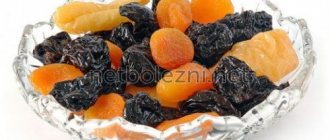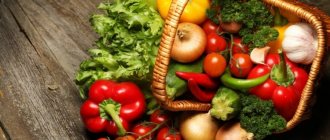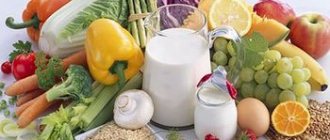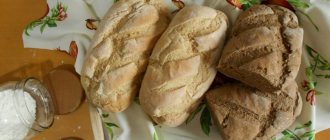Constipation is a disease associated with deterioration of intestinal permeability and stagnation of feces in it. As a rule, this occurs due to impaired intestinal motility. The muscles are either too relaxed and cannot push feces, or, on the contrary, they are too tense and hold the feces, preventing them from moving forward.
Constipation is perhaps the most common intestinal disease and can occur several times during a lifetime. If left untreated, this disease can lead to the development of hemorrhoids, intoxication of the body, and even the appearance of cancer. In view of this, constipation should be eliminated as early as possible.
Beneficial features
Treatment of constipation is usually carried out with medication, as well as through changes in lifestyle and diet. However, with the permission of the doctor, traditional methods of therapy are also used, among which one can note the use of jelly for constipation.
Kissel is a jelly-like substance made from a mixture of berry or fruit juice, potato starch and cereals. Kissel is quite easy to make, especially since ready-to-cook dry mixtures are sold everywhere.
But the healthiest and most natural jelly will be one prepared independently, without the presence of flavor enhancers, preservatives, dyes and stabilizers. True, the shelf life of such a drink is not long, so you should drink it as soon as it is ready.
You can make jelly yourself at home
So is it possible to drink jelly if you are constipated? We can say that yes, since the starch contained in the drink has a beneficial effect on the intestinal mucosa, covering the walls with a soft film, which allows you to painlessly remove feces from the body, which also has a positive effect on the intestinal microflora.
The list of the main beneficial properties of the drink looks something like this.
- normalization of microflora in the gastrointestinal tract;
- elimination of intestinal dysbiosis;
- removal of toxic substances from the body;
- normalization of acid-base balance in the intestines;
- improvement of peristalsis and intestinal motility.
In addition, jelly allows you to safely remove a number of toxins and waste from the body, without putting a lot of stress on the pancreas and liver. As a rule, the ingredients of jelly cause an allergic reaction only in rare cases , in case of individual intolerance to any components.
Features of jelly
Kissel is considered to be a gelatinous dish prepared on the basis of starch or grain crops.
To add flavor, berries or fruit juices are added to it. Depending on the composition, the properties of the product will differ, so it is necessary to strictly adhere to the preparation rules and purchase only high-quality raw materials. Many people are interested in whether it is possible to drink jelly for chronic and acute constipation. The controversy may stem from the fact that this dish was originally known for its beneficial effects on diarrhea. However, even in case of difficulty in defecation, it can provide assistance.
In stores you can find powdered analogues that do not fully have the same properties as the natural product that you prepared yourself.
Indications for use
Kissel can be used for constipation due to the following beneficial properties:
- Starches are a substrate for the vital activity of many representatives of normal human microflora, which is actively involved in the functioning of the gastrointestinal tract, so taking jelly containing it can improve digestion;
- Kissel contains substances that work in the intestines like sorbents, neutralizing and removing toxins from the body;
- Promotes normal absorption of nutrients;
- Gently cleanses the intestines;
- Positively affects the acid-base balance in the intestines (pH);
- Normalizes the peristaltic movements of the intestinal muscles and sphincter tone.
Contraindications
Usually there are no contraindications to consuming jelly for constipation, but the following points should be taken into account:
- Kissel is a fairly high-calorie dish, so overweight patients should limit its intake;
- Starches in their chemical structure are carbohydrates, which under certain conditions can be converted into glucose. Therefore, patients with diabetes should consult a doctor before consuming jelly;
- There is a risk of developing an allergic reaction both to the natural components of the jelly (berries, fruits, cereals) and to various chemical additives contained in the artificial powder product.
About the medicinal plant
Oats are an annual plant from the cereal family. Today it is produced quite a lot on an industrial scale. It consists of a stem, leaves and spikelets. These spikelets contain seeds that have healing properties. The plant blooms from early to mid-summer. It is produced in large quantities in Europe and Asia.
Oats have long been used in medicine. Like all grains, oats are high in fiber. It speeds up metabolism and normalizes intestinal microflora. Magnesium and potassium improve vascular function and mental activity. The composition of this product, rich in useful elements, explains its medicinal properties.
It is very important not to confuse oats with oatmeal that is sold in stores.
Oats are a cereal crop used by humans in the preparation of various dishes.
Mechanism of action
We found out whether it is possible to use jelly for constipation. But how exactly does it affect the human body? A mild laxative effect is achieved thanks to the successful combination of viscous consistency and chemical properties of jelly components.
Blueberry jelly is very popular for various diseases of the gastrointestinal tract
Simply put, jelly has an irritating effect on the intestinal walls , not very strong, but at the same time sufficient for the peristalsis of the intestinal muscles to return to normal and contribute to the effective ridding of the body of stagnant feces.
One of the advantages of sour drinks is the absence of chemical harm. The muscle tone of the large intestine does not decrease, as can be the case under the influence of medications, and jelly is also not addictive.
However, questions periodically arise: can jelly itself cause constipation or is this impossible in principle? It should be recalled here that constipation is a consequence of disturbances in digestive processes and intestinal motility, so there can be many reasons for it, from purely physical to those related to depression and stress.
In some cases, the question of whether jelly can cause constipation should be answered positively. There are a number of contraindications, the observance of which will help to avoid further disruption of digestive processes and the development of more severe diseases based on constipation. The contraindications are as follows:
- obesity and the development of related diseases, since jelly is a rather high-calorie drink and may be prohibited in such cases;
- the presence of diabetes mellitus, since even in the absence of sugar, jelly is still a carbohydrate-rich product, which can cause a number of negative consequences;
- an allergic reaction to specific components in the drink.
To avoid problems with the gastrointestinal tract and improve the effect of jelly, you should use only proven products in cooking , add flax seeds, periodically stir the prepared mass to avoid burning, adjust the consistency in time and do not boil the drink if the starch is already in the pan.
Kissel can also be given to small children, as it has a mild effect.
Leovit
On pharmacy shelves you can now find a special jelly with a laxative effect, “Leovit”. It is indicated for indigestion and other diseases of the gastrointestinal tract.
The main components of this jelly are oats, sugar and starches. Additionally, the composition may contain apples, beets, mint, buckthorn bark or dill.
Prepare it according to the instructions and usually consume 2 tbsp daily on an empty stomach. If after 2 weeks of use, digestion is still impaired, add another spoon at night or add additional flaxseeds to the diet.
Instead, you can use Defenorm, Norgalax or Picolax.
Symptoms
The first symptom of constipation is bowel movements less than 3 times a week. However, these periods may vary depending on the patient’s age, so when diagnosing, the doctor also relies on other symptoms:
- Difficulty defecating, requiring you to push
- Hard, dry or thin, slimy stool
- Only partial bowel movement
- Feeling of pressure in the rectum
- Bloating, hard belly
- Increased gas formation
- Nausea, vomiting, increased body temperature
- Painful sensations during defecation
- Lower abdominal pain
- Bad breath
General malaise, weakness, loss of appetite, heartburn, insomnia, headache, and convulsions may also occur.
Cooking methods
There are many recipes for cooking yourself at home. Home cooking allows you to avoid including unnecessary components in the composition and makes the drink more healthy. For example, oat jelly contains many important amino acids, vitamins and microelements and is quite easy to prepare.
Oat
To do this you need 500 grams of oatmeal, 100 ml of kefir and 3 liters of clean water. All this is mixed in a saucepan, after which it begins to ferment for 1-2 days in a dark but relatively warm place. You should not heat the pan additionally or hold it longer, as this will ruin the drink.
When fermentation is complete, the resulting mixture is filtered through a sieve and left in a cool, dark place for 18 hours. After this, the upper liquid part is eliminated, and the drink itself is prepared from the denser concentrate at the bottom.
10 tablespoons of the creamy mass are mixed with half a liter of water, then boiled over low heat until the desired consistency. When cooking is finished, the resulting mass should be cooled and seasoned to taste with whatever you want. This type of jelly is dense and not sweet, so it is consumed mainly by spreading it on bread.
Berry
Jelly made from rowan berries , in turn, improves the activity of gall bladder and liver enzymes, and also supplies the body with a number of useful and nutrients. This drink is prepared from a mixture of berries and water with the addition of calamus root.
When cooking, jelly must be thoroughly mixed so that it does not burn.
The mixture in the desired proportions is boiled in a saucepan for about 15 minutes , after which starch is added, something sweet to taste, such as sugar syrup or honey, and then cooled before further use.
Another berry jelly is a drink based on rose hips . It copes well not only with constipation by improving the peristalsis of the large intestine, but also with other diseases of the duodenum, while eliminating dysbiosis.
In order to prepare this drink, you need finely chopped rose hips, which are mixed with water and simmered over low heat for 15 minutes. When the broth is ready, add starch and honey in the required proportions to the pan and stir until a homogeneous mass is obtained, then bring to a boil and cool.
Fruit
Apple jelly is made from the pulp of fresh, juicy apples with the core cut out. First, the apples are boiled, after which the cooled fruits are finely grated and added to the broth. The resulting fruit puree is mixed with starch and sugar, brought to a boil and cooled before use.
There is also a very popular recipe for dried fruit jelly , as they perfectly cleanse the clogged body, help normalize digestion, lose weight, and also effectively help eliminate constipation, as they contain fiber and coarse dietary fiber, which allows you to normalize intestinal motility.
To avoid further constipation, it is also recommended to eat foods rich in fiber.
As a rule, dried apricots and prunes are used for this drink, but beets are also added. All this is mixed in equal proportions with the required amount of water and cooked for 15 minutes. When some of the water has evaporated and a viscous homogeneous mass is obtained, it can be cooled and consumed.
From flax seeds
The recipe for making a jelly drink from flaxseeds is unusual. This remedy allows you to remove waste, toxins, and incompletely digested food debris from the intestines, and also gently envelops the intestinal mucosa and effectively eliminates constipation.
In order to prepare the drink, you need to brew flaxseeds with boiling water at the rate of 200 ml per 1 tablespoon , then simmer the mixture over low heat for half an hour, remembering to stir it constantly to avoid burning. Then the cooled mass is filtered through a fine sieve and something sweet is added to taste.
Any dietary changes or consumption of any foods or medications during treatment for constipation should be discussed with your doctor. It is very easy to harm yourself if you ignore your doctor's recommendations.
Types of jelly
As in ancient times, jelly is divided into two types - sour grain and sweet fruit and berry. The main active ingredient in them is the vegetable thickener starch, but the preparation methods differ.
Sour grain jelly
can be called in some sense more natural. Starch for it is “extracted” during the cooking process from flour or cereals of plants growing in central Russia. The most polysaccharides are found in oats, wheat, rye and legumes (in particular, good old peas). But rye jelly has a too pronounced taste “for everyone,” and wheat, being the main grain, has always been more expensive than other grains. Therefore, historically it so happened that “sour” jelly was prepared mainly from oatmeal. When hot, it can be consumed as soup or used as a base for soup, and when cooled, it can be used as a vegetable analogue of jellied meat.
Oatmeal jelly Izotov
, which was extremely popular in the 90s of the 20th century as a means for quick rehabilitation after diseases of the heart, pancreas, gastrointestinal tract and liver, in fact, is also an ordinary sour grain jelly with the addition of butter, sunflower, olive or sea buckthorn oil.
Sweet fruit and berry jelly
(in some sources also called red due to the addition of berries) you can cook it yourself by adding starch to juices and compotes. However, for home preparation, dry concentrates are most often used, which only need to be diluted with hot water and cooled before use. Fresh berries (blackcurrants, blueberries, strawberries, etc.), finely chopped pieces of fruit and sweeteners in the form of sugar, syrups or honey are added to sweet jelly. Nowadays, fruit and berry jelly is the most popular. It is produced in pressed form (briquettes) or in powder form.
Russian jelly has close relatives in other countries.
- Kulaga.
A cousin of jelly, popular both in Russia and in Ukraine and Belarus. According to the production technology, it resembles jelly: rye flour is mixed with rye malt, water and viburnum fruits, and then left to ferment warmly in a sealed container for 8–10 hours. After cooking, you get a thin porridge rich in vitamins B, C and P, as well as tocopherols. In the Belarusian version of kulagi, wild berries and sugar are added instead of viburnum.
- Touch.
A representative of Lezgin cuisine, a cross between a drink and a soup. The tach requires a special mixed flour made from sprouted barley and toasted wheat. It is poured with warm water and left for 24 hours.
- Rothe Grütze.
Another brother of jelly, this time from Germany and Scandinavia. It would be more correct to classify Rote Grütze as a dessert: in addition to wheat, corn or rice starch, it is based on a mixture of grated berries, sugar, vanilla and a small amount of red wine. The dish is served with ice cream, whipped cream or milk.
- Zhur.
In Belarus, Poland and the Czech Republic, pre-prepared oatmeal jelly is mixed with meat or chicken broth, brought to a boil and vegetables and mushrooms, smoked meats, spices and other ingredients are added. The resulting thick soup is called zhur.
Oats for smoking and alcohol addiction
More and more people have recently become hostage to the use of alcoholic beverages or tobacco products. Oat decoction will help remove tars and other harmful substances from the human body from smoking. But besides this, it is also able to remove the breakdown products of alcohol. Eating it will help cause aversion to the listed “relaxation products.”
For people with addiction, jelly or drink is better. It is prepared from a glass of cereal, which is filled with 5 times more water. Place on the stove and cook until it becomes mushy. Then strain. Combine with the same amount of boiled cooled milk. You can add a couple of spoons of honey. It should be taken warm, half a glass up to 6 times a day. Oats will also relieve alcoholism in this way.
Benefits of the drink for the human body
In the modern understanding, jelly is a dessert, a sweet thick drink that is consumed at the end of a meal. But in the traditional sense, it was never a dessert, rather an everyday food. The modern recipe for jelly appeared when they began to make starch from potatoes in Rus'. Berries and fruits give the drink color and aroma. As a result of heat treatment, almost all the beneficial nutrients contained in them are destroyed, and starch breaks down into glucose under the action of digestive enzymes. To make healthy jelly, you need to know the right recipe.
If you replace starch with pectin, you can significantly increase the benefits of the product. The human body does not have enzymes that can break down pectin, so it is not absorbed or absorbed in the gastrointestinal tract.
To prepare jelly with pectin, take the following products:
• cranberry juice – 1 l; • pectin – 10 g; • sugar – 1 tbsp. l. (more is possible).
Preparation:
1. Heat the fruit drink. 2. Pectin is diluted in liquid and added to the boiling mixture. 3. Cook for 5 or 6 minutes until thick and on low heat. You can add fresh berries to the chilled drink, which will enrich it with vitamins.
Composition of jelly
Although the composition of the jelly varies depending on the ingredients, it contains universal components.
Starch
The most important substance, without which jelly cannot be imagined. From a chemical point of view, starch is a polysaccharide, a mixture of amylose and amylopectin. In hot water, starch swells and turns into a colloidal solution. If you use a large amount of starch, you can get a paste that is familiar to everyone from childhood from home crafts and repairs.
The value of food starch is that in the stomach it, being a complex carbohydrate, is broken down into glucose and water, and glucose is a universal source of energy for the body's cells. In addition, it is starch that is responsible for the enveloping structure of jelly.
Sucrose or fructose
Factory-made jelly almost always contains sweeteners - either regular sugar or fructose. When simple carbohydrates enter the body, they break down into carbon dioxide and water, releasing vital energy. In homemade jelly, sugar can be replaced with honey or other sweeteners.
Vitamins and minerals
Vitamin C
– a powerful antioxidant involved in the regulation of redox processes. Helps the body cope with stress and stress, improves the condition of infectious diseases, and helps strengthen the immune system.
Vitamin A
comes into jelly from berries and fruits (can be contained to a greater extent in pea jelly, since legumes are rich in carotenoids). Vitamin A is necessary for the synthesis of connective tissue cells, hyaluronic acid, heparin, taurine, and sex hormones. It is also important for the production of the visual pigment rhodopsin, which is responsible for dark vision.
B vitamins
: B1 (thiamine), B5 (pantothenic acid) and B6 (pyridoxine). In traditional “sour” jelly they come from cereals - oats, wheat or peas; in “sweet” jelly they can be added artificially. Participate in the metabolic process, accelerate the healing of wounds and ulcers.
Vitamin PP
(nicotinic acid) is necessary for the exchange of enzymes and lipids, and is involved in the metabolic process. A lack of nicotinic acid causes skin diseases, in particular dermatitis.
Potassium
necessary for the normal functioning of the cardiovascular system and muscles. Potassium deficiency causes problems with blood pressure, weakness, dizziness, and numbness in the limbs.
Types of constipation
There are several classifications of constipation, based on the causes, severity and stages of the disease. There are acute and chronic, as well as functional and organic types of this disease.
Based on the reasons for its occurrence, there are the following varieties:
- Alimentary constipation, which appears due to poor nutrition, irregular diet, or as a result of insufficient fluid intake
- Mechanical. Occurs due to difficulty or impossibility of emptying as a result of narrowing of the intestinal lumen, tumors, scars, cracks
- Reflex, which is possible due to various dysfunctions and diseases
- Hypokinetic, due to an unhealthy, sedentary lifestyle
- Toxic. Poisoning of the body occurs with drugs or other toxic substances or gases
- Endocrine, as a result of a malfunction of the endocrine system
- Psychogenic. Impaired defecation occurs due to stress, pathologies of the nervous system, and overexertion.
Constipation is also divided into those in which:
- Intestinal tone is increased, and feces do not enter the rectum (spastic)
- The tone is weakened, and with sluggish peristalsis, food lumps practically do not move (atonic)
What are the benefits of oatmeal and flaxseed jelly?
In Russia, oat jelly was part of the daily diet of ordinary people and members of the nobility. Special people, “jelly makers,” prepared the product for sale. Having become interested in the medicinal properties of the drink, at the end of the last century, the doctor V.K. Izotov proposed his own recipe and even patented the discovery.
Izotov jelly is prepared from the following products:
• water 2 l + 1 tbsp.; • oat flakes – 500 g; • coarse oatmeal – 6 tbsp. l.; • kefir – 125 ml.
Preparation:
1. All products are mixed. Take warm water, like fresh milk. 2. Cover the container and leave for two days to ferment. 3. The finished mass is strained through a sieve, and the flakes are squeezed out. 4. The resulting liquid is left to infuse for 15 hours. It should be divided into two parts - the upper liquid and the lower thicker. 5. The top part of the drink is drained and stored separately. It is used for dilution when cooking jelly. 6. Boil the drink before drinking it. To do this, take 2 tbsp. liquid part of the settled drink and 7 tbsp. l. thick sediment. 7. Add olive oil to the finished drink, add some salt and drink when it has cooled down a little. The beneficial properties of oatmeal jelly are due to its chemical composition. It contains: • amino acids; • vitamins (A, B1, B2, B5, E, PP); • mineral salts (Ca, K, Fe, Mg, F).
Miracle jelly heals many organs - kidneys, liver, spleen, gastrointestinal tract, pancreas, gall bladder. With its constant use, even chronic ailments go away and overall health improves.
Flaxseed jelly is very easy to prepare. His recipe includes whole flaxseeds or flaxseed meal and water. Berries, chicory, kefir, and honey are used as additional ingredients.
The simplest cooking method:
1. Stir 1 tbsp in a glass of warm water. l. oatmeal 2. Add a spoonful of honey and a few raspberries to taste. 3. Let it brew and drink before meals. Flaxseed jelly is especially useful for gastritis and ulcers. Mucus and plant fibers of flax promote healing of the inflamed inner wall of the stomach, normalize stool, and remove toxins from the body. Flaxseed jelly also contains useful vitamins and microelements.
Recipes
To make the desired product truly useful, you need to use high-quality products and add laxative components to the jelly (for example, flax seeds).
When you have added starch, the jelly should never be brought to a boil. It is constantly stirred, as there is a risk that it will burn. The desired consistency is obtained by adding liquid in small portions.
With flax seeds
Flaxseed itself has a pronounced but mild laxative effect. Based on the anthraglycosides it contains, there are tablets for constipation “Sennade”.
To prepare jelly, you must follow these instructions:
- Flax seeds (1 tablespoon) are poured with a glass of boiling water for 15 minutes;
- After this, the product is heated over low heat for another 30 minutes, remembering to stir constantly;
- Allow the product to cool;
- Strain through a fine sieve or several layers of gauze;
- If desired, you can add a little honey, chopped dried fruits or berries.
In the complex treatment of constipation, the remedy should be consumed 1-2 glasses a day on an empty stomach or 1.5-2 hours before meals. Kissel does not contain irritating substances, so it is allowed even in cases of inflammatory damage to the gastroduodenal part of the gastrointestinal tract (stomach and duodenum).
With oats
Most often, jelly was previously made from oats. Moreover, it is advisable to use cereals rather than flakes, since they contain more nutrients.
The cooking instructions are as follows:
- 250 g of oatmeal is poured into 700 ml of warm water, covered with a lid and left to infuse for a day;
- Next, the mixture is filtered and the resulting liquid is almost brought to a boil over low heat;
- Boil until thickened, cool and consume.
Oat jelly is taken in a glass in the morning on an empty stomach for a month.
With dried fruits and buckthorn
Dried fruits and buckthorn bark have a laxative effect for constipation. When preparing jelly from these components, the effect is enhanced.
Please follow these instructions:
- Place prunes, dried apricots and 50 g of buckthorn bark in a saucepan with 2 liters of water;
- Place on low heat and bring to a low boil. After this, slightly reduce the heat and cook for another 30-40 minutes until thickened;
- If desired, you can add a little natural honey;
- The product must be left to cool;
- After this, it is poured into a glass jar and stored in the refrigerator.
Take half a glass before going to bed (no less than 2 hours after dinner).
With rosehips
The use of rose hips in the preparation of jelly will reduce inflammatory manifestations in the stomach and duodenum. This remedy is also indicated for disturbances in peristalsis or muscle tone of the gastrointestinal tract,
Kissel is prepared according to the following algorithm:
- The rose hips must be crushed, and then pour in 800 ml of water;
- Cook over low heat for a quarter of an hour;
- Next, introduce 2 tbsp. l. starch dissolved in a small amount of water and 2 tbsp. l. honey;
- Heat, stirring constantly, until the first signs of boiling appear;
- Cool, strain and consume 0.5 cups daily at night.
With apples
Before cooking, fresh apples must be peeled, pitted, and cut into large pieces.
To prepare jelly, follow these steps:
- Apples (about 300-400 g) are placed in a cooking container and filled with water so that it completely covers the fruit;
- Bring the product to a boil over low heat, allow it to cool and rub through a sieve;
- Applesauce is mixed with starch dissolved in water and a small amount of honey;
- Boil over low heat.
Accepted in the same way as in previous cases.
With rowan berries
Rowan berries contain a large amount of useful substances, vitamins and microelements. This jelly causes gentle bowel movements without disturbing the functioning of the liver and gallbladder.
Prepare jelly from rowan berries as follows:
- I eat rowan berries and 0.5 tsp. Calamus root is poured with water and cooked over low heat for a quarter of an hour;
- Next, you need to strain the product, and add 2 tablespoons to the resulting liquid. starch, stir well and cook until thick.
Preventing constipation
The main preventative method is proper, nutritious nutrition. It is necessary to eat more often those foods that contain dietary fiber and fermented milk products. It is better to eat fruit than drink fruit juice, do not forget about nuts and bran. It is advisable to exclude alcohol, fatty foods, and viscous cereals. You also need to drink enough water and follow a proper diet. A healthy and active lifestyle creates good blood supply and peristalsis, and prevents stagnation of feces. In this case, massages and gymnastics can help. It is also recommended to avoid stressful situations.
Beneficial properties during pregnancy and lactation
Kissel can be prepared according to different recipes - from potato starch with berries or from oatmeal and flaxseed. The benefits of a starch-based drink are highly questionable only if the latter is replaced with pectin.
Flaxseed or oatmeal jelly, on the contrary, helps strengthen the immune system, improve bowel movements, and supplies the body of mother and child with necessary vitamins and mineral salts.
The only pity is that healthy jelly is not as tasty as a sweet, fruity drink with berries and starch.
Use in folk medicine
In folk medicine, traditional oat jelly is used for diseases of the intestines and the gastrointestinal tract in general, diabetes, problems with blood vessels and the heart. It is prepared by fermenting oatmeal with water and fermenting for many hours. An easier recipe involves using black bread and Hercules flakes.
Components:
• oat flakes – 500 g; • black bread – 1 slice; • water – 1 l.
Process description:
1. Pour the flakes with water overnight and throw a small piece of black bread into the drink. 2. In the morning, filter the mixture, remove the bread, and grind the oatmeal through a sieve into the strained infusion. 3. Cook the jelly over low heat for 30 minutes. 4. Drink when it cools down. The flax seed drink is steamed in a thermos overnight. Add 2 tbsp. l. seeds per 0.5 liters of water. They drink such remedies for constipation, stomach ulcers, gastritis, and reduced immunity. The frequency of use depends on the number of meals; drink a little drink 20 minutes before meals.
History of jelly
Kissel began to be cooked in Rus' in ancient times, long before the advent of Christianity. Then it was not just a delicacy, but part of the ritual cuisine: it was often served on the table during religious holidays. The simplest recipe for jelly is this: oatmeal is diluted with water and left to ferment, then filtered and sent to the oven to cook. The dish was eaten cold. Instead of oatmeal, wheat, pea or rye flour could be used, but oats were the cheapest and most accessible raw material. Kissel was considered an intermediate dish between Lenten soups and porridges (pea jelly, for example, was even eaten with meat broth).
The first documentary mentions of jelly appeared in the Tale of Bygone Years, a chronicle written by (according to some sources) the monk Nestor of Pechersk. In one of the episodes of the chronicle, a legend is described according to which jelly saved Belgorod from an attack by the Pechenegs. The city was besieged, there was almost no food left, and the inhabitants were about to surrender, but one wise old man advised to wait a few days. From the miraculously collected oats, wheat and bran, they prepared jelly and lowered a tub of it to the bottom of the well, and placed a bucket of honey in the adjacent well. After this, the Belgorod residents invited several Pechenegs to come into the city and showed that they could extract not water from the wells, but honey and jelly, and therefore were not afraid of hunger. Impressed by this, the Pechenegs decided that they could not win and abandoned the siege.
In the 16th–18th centuries, jelly ceased to be exclusively homemade food and became a popular catering dish. Street vendors of jelly appeared, who were called kiselniks. The Moscow streets where the Kiselniks lived subsequently received the name Kiselny lanes (Bolshoi Kiselny, Maly Kiselny and Nizhny Kiselny).
Kissel has become a dessert closer to our time. In the 18th century, Peter I, along with many other useful innovations, tried to introduce potatoes. At first, nothing came of it: the peasants called it the “damn apple” and were able to accept it as a vegetable crop only after a century and a half. In the mid-19th century, potatoes finally became a popular vegetable, and, among other things, they began to produce cheap starch from them. Based on the latter, with the addition of sugar, fruits and berries, the first modern jelly was created.
Now jelly is by and large considered a children's dessert or a remedy for heartburn and exacerbations of gastritis. But among chefs and bartenders there are enthusiasts who experiment with jelly and create new dishes, alcoholic and non-alcoholic cocktails based on it. Most often, jelly is made either completely liquid and used as a sauce, or mixed with strong alcohol. For example, cocktails based on jelly, rum, lemon and honey are known.










